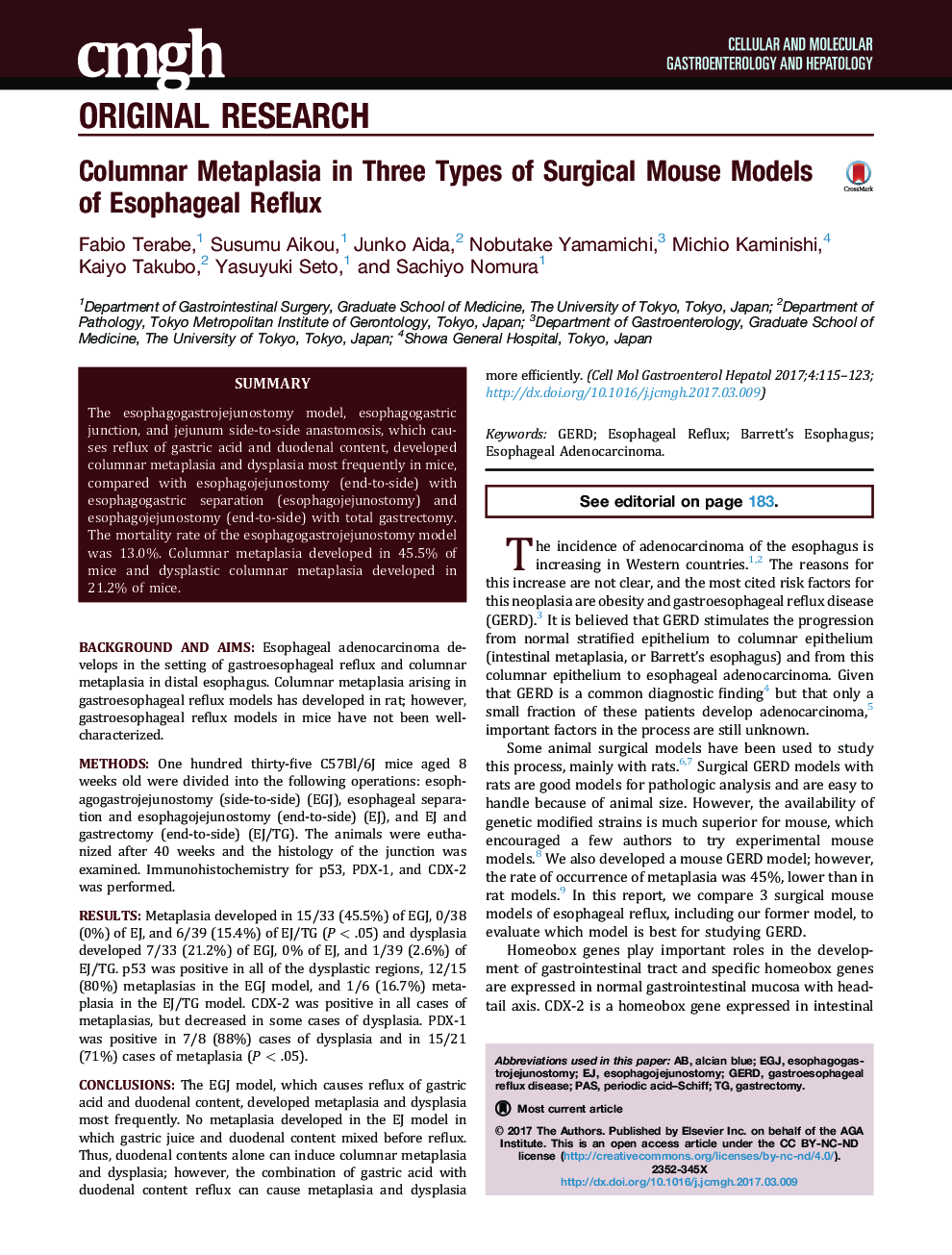| کد مقاله | کد نشریه | سال انتشار | مقاله انگلیسی | نسخه تمام متن |
|---|---|---|---|---|
| 5517185 | 1400954 | 2017 | 9 صفحه PDF | دانلود رایگان |
Background and AimsEsophageal adenocarcinoma develops in the setting of gastroesophageal reflux and columnar metaplasia in distal esophagus. Columnar metaplasia arising in gastroesophageal reflux models has developed in rat; however, gastroesophageal reflux models in mice have not been well-characterized.MethodsOne hundred thirty-five C57Bl/6J mice aged 8 weeks old were divided into the following operations: esophagogastrojejunostomy (side-to-side) (EGJ), esophageal separation and esophagojejunostomy (end-to-side) (EJ), and EJ and gastrectomy (end-to-side) (EJ/TG). The animals were euthanized after 40 weeks and the histology of the junction was examined. Immunohistochemistry for p53, PDX-1, and CDX-2 was performed.ResultsMetaplasia developed in 15/33 (45.5%) of EGJ, 0/38 (0%) of EJ, and 6/39 (15.4%) of EJ/TG (P < .05) and dysplasia developed 7/33 (21.2%) of EGJ, 0% of EJ, and 1/39 (2.6%) of EJ/TG. p53 was positive in all of the dysplastic regions, 12/15 (80%) metaplasias in the EGJ model, and 1/6 (16.7%) metaplasia in the EJ/TG model. CDX-2 was positive in all cases of metaplasias, but decreased in some cases of dysplasia. PDX-1 was positive in 7/8 (88%) cases of dysplasia and in 15/21 (71%) cases of metaplasia (P < .05).ConclusionsThe EGJ model, which causes reflux of gastric acid and duodenal content, developed metaplasia and dysplasia most frequently. No metaplasia developed in the EJ model in which gastric juice and duodenal content mixed before reflux. Thus, duodenal contents alone can induce columnar metaplasia and dysplasia; however, the combination of gastric acid with duodenal content reflux can cause metaplasia and dysplasia more efficiently.
Journal: Cellular and Molecular Gastroenterology and Hepatology - Volume 4, Issue 1, July 2017, Pages 115-123
